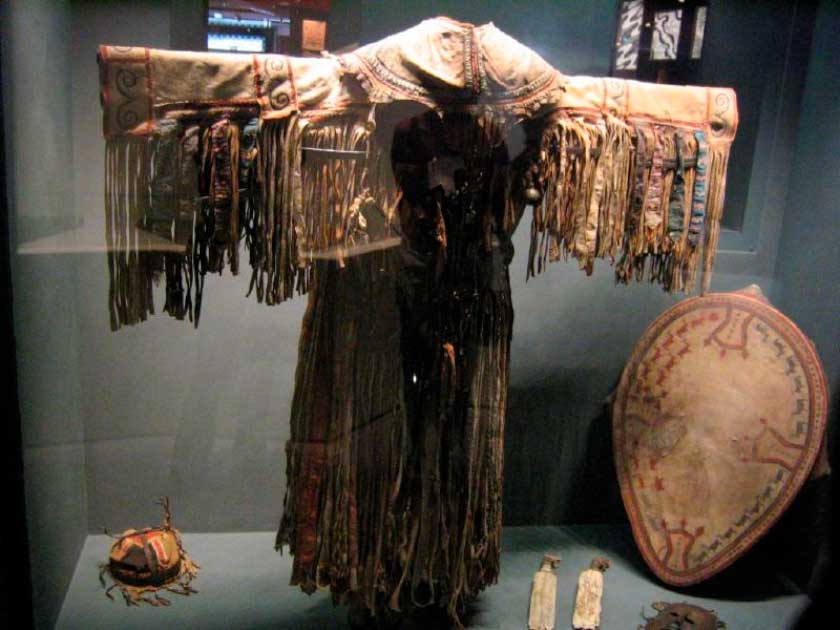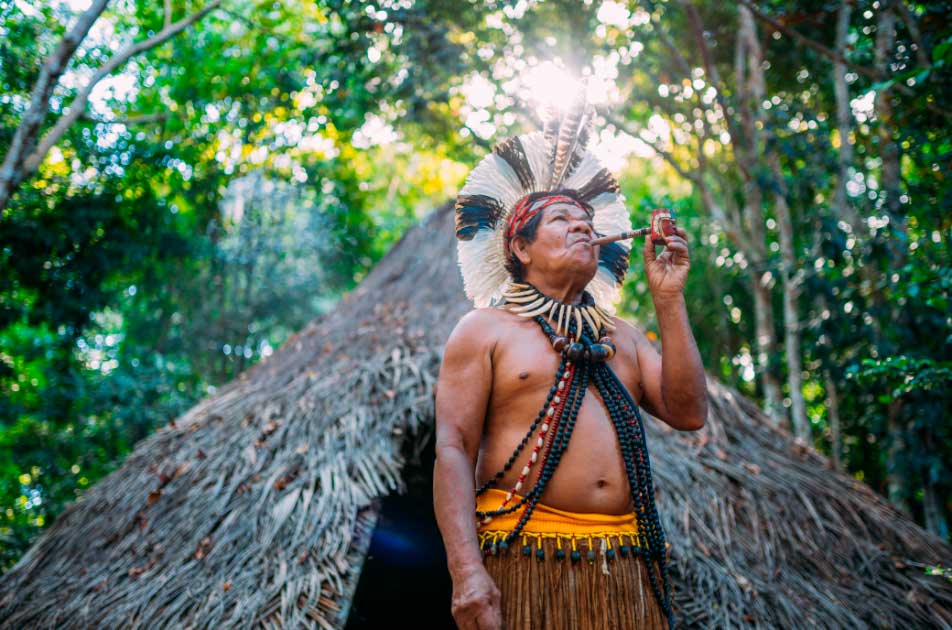Religious leaders are often looked to for guidance. Sometimes the advice they give comes from earthly wisdom, inspired by the divine rather than instructed. And sometimes decisions are made determined by cosmic energy, departed souls, or supernatural forces from another realm. This is the path of the shaman, and their spirit guides.
Such mystics do not study to gain to obtain their position but rather are chosen at birth. The image of a spiritual guide has evolved through time and across cultures, but what are the commonalities that unite them all? What method do they use to connect with the infinite?
Spiritual leaders were prevalent in African history long before Christianity or Islam made its way to the continent. The concept held that ancestors were compassionately watching after their current descendants as the “living dead”.
Born into the role, some special members of the community were called to duty by the spirits of their ancestors to shepherd the tribe. They served as go-betweens for the living dead and the Almighty Gods.
Shaman from the Americas typically looked to a spirit animal to guide then, both a reflection of their personality and a useful link to their history and traditions. Such shaman, typically influenced by mind-altering substances, commanded respect.
In some Western traditions, however, it was believed that the guide was selected by cosmic energy rather than the spirit of a human. A spiritual guide chosen would have lived many lives, paid their debts, and would from that point avoid reincarnation.
Our Link to the Infinite
Many people associate the word “spirit guide” with a shaman. But, exactly, what is a shaman? When we look at the term’s etymology, we can see that it originated from Sanskrit (an ancient language of India).

The Evenks (indigenous people of North Russia, ancestors of the Tungusic people of North Asia) coined the term in their native language of Manchu-Tungus in the 17th century. The noun shaman was derived from the verb “to know” implying that the person designated shaman is the “one who knows all”.
Many aspects of shamanism are common across different cultures. When performing a ceremony, they would wear sacred clothing and use ornaments. They would be eccentric, insightful, and sensitive individuals, sometimes with physical defects such as an extra finger or deformed limb.
They would invoke an altered state of consciousness, at times a trance state to connect the physical world with the otherworld. In this they would be helped to connect through an active spiritual leader, a guide who would help them understand the vastness of the infinite.
At an early age or at birth, mystical forces predetermined their fate. They would often be tortured for years by a physical or mental ailment known as “shaman illness”. Only when they realized their calling would they eventually settle beyond this torturous stage and take their position as a chosen shaman.
In order to connect to the otherworld, their soul must leave their body. Their body is cut off from their thoughts, and they may even become limp. Only the shaman may see what lies beyond.
Origins of the Shaman Tradition
Historians believe some form of shamanism can be detected possibly as early as the Paleolithic period, and most definitely in the Neolithic Age. The generally undisputed earliest known shaman burial is estimated to have taken place in the Czech Republic in the early Upper Paleolithic Age (c. 30,000 BC).
In Israel, the Hebrew University of Jerusalem unearthed another 12-thousand-year-old shaman burial of an older woman. Ten huge stones, 50 tortoise shells, the remnants of a marten, a leopard, a bear, and one sole human foot were placed on her tomb.
Researchers noted, “It seems that the woman … was perceived as being in a close relationship with these animal spirits”. This burial was remarkable in that it was amid over 27 other grave sites, but hers was the only one that had been adorned. Her grave site is said to be unlike any other in the Paleolithic era.
The Evenk, the indigenous peoples who coined the word shaman in Northern Siberia, fear their spiritual guides as much as they revere them, if not more. According to tradition, clansmen pay the clan’s shaman in animals as a manner of thanking them for their activities. No matter how affluent or impoverished a family is, they would all pay their dues.
Other accounts show shamans serving not just as spiritual leaders, but also as tribal leaders. Spiritual guides led armies into conflicts in Siberia and Mongolia, demonstrating how powerful these chosen people were.
Shamanism has retained its traditional position amongst the Native Americans, Indigenous Australians, Arctic peoples, and some African indigenous groups. Many other peoples at one time or another held spiritual guides at the forefront of their culture’s as they predated religion but later turned to mainstream religions.
Many abandoned their original beliefs in favor of newer religions. The Ugric people of Russia and the Turkic peoples of Asia converted to Christianity, while the Mongols converted to Buddhism, these are just a few examples of many communities who forsook their indigenous spiritual guides.
Cultivating a Connection
As old as the invention of spiritual guides is the practice of using psychoactive plants to reach higher plains of consciousness. Many cultures utilize the flora and fauna around them in rituals and ceremonies.

The theory is that by using natural psychoactive compounds a person will be aided in their journey to the spiritual realm. With the aid of a spiritual leader, these ceremonies aim to heal, communicate with the dead or even aid the souls of the dead to reach a different realm.
Colonialism, along with imperialism put a stop to many of these spiritual practices, although there’s been a resurgence amongst some geographically isolated indigenous groups, such as the Tuvan people with a population of 3,000 in Russia. The 20th century brought with it a trend of neo-shamanism; an invention created during the hippy movement by Westerners. This trend received an immense amount of criticism for its reported cultural appropriation and exploitation.
A quick google search reveals thousands of “spiritual” experiences are available to any interested consumer. These experiences usually take place in a location where there is or was an indigenous group living and more often than not include to use of psychoactive plants, most commonly ayahuasca.
Whether these are genuine spiritually guided ceremonies or appropriated tourist attractions greatly varies. What is apparent is that humans have been searching for higher forces and questioning the existence of other spiritual realms since the start of time. As a result, it is reasonable to believe that spiritual guides have played a role in our cultures from the dawn of time.
Top Image: How does a shaman unlock the secrets of the infinite? Source: Warpedgalerie / Adobe Stock.
By Roisin Everard